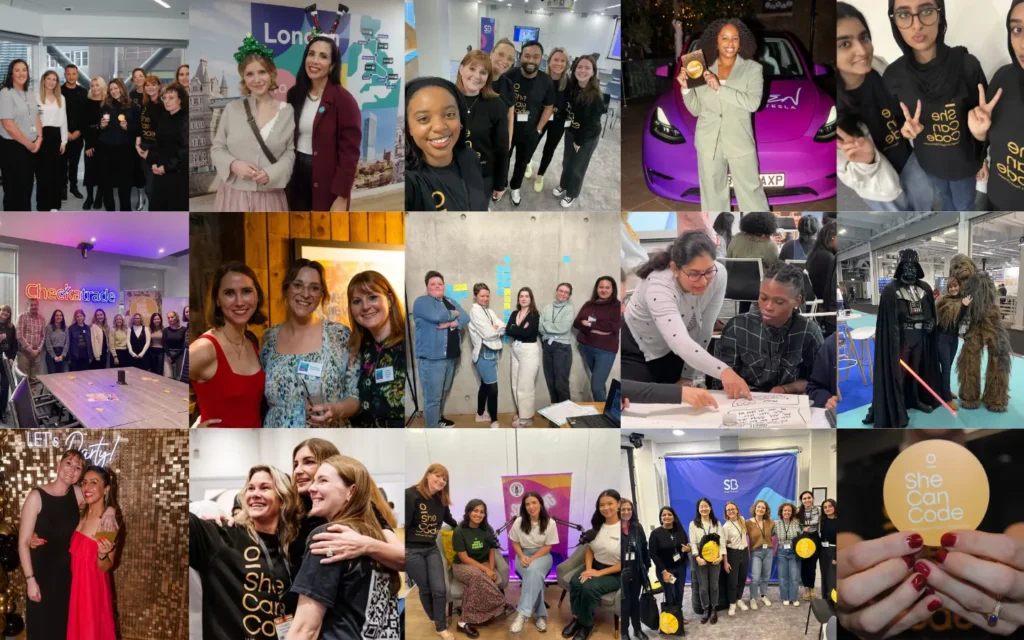Women make up 47% of the US workforce.
Yet, in tech, just 25% of roles are filled by women. For tech leadership, that figure drops to just 11%.
As more women enter the tech workforce, representation must go beyond diversity quotas. It’s about ensuring women are seen and supported through fair, equitable opportunities that begin with intentional internal initiatives.
According to AND Digital’s 2025 US Women in Tech report, “Doing it for themselves: How women are rewriting the rules of leadership,” 84% of respondents said workplace dynamics have evolved following increased promotions and opportunities for women in tech.
Across the U.S., women enter the industry with purpose, set ambitious individual goals, build careers on merit, and actively challenge outdated gender norms. They are defining what leadership looks like.
Doing It For Themselves:
90% of women enjoy their positions, and 82.5% feel they have succeeded. Many agree there is significantly more support for women in tech than in the past.
Women enter tech for a mix of personal passion and practical reasons. Tech, especially in the startup space, allows them to explore diverse roles and discover what they enjoy. They are drawn to tech for its creative potential, personal fulfillment, and the ability to do meaningful work.
Multiple respondents said they moved into tech to increase their earning potential. Unlike many other industries, the promise of flexibility makes tech an appealing path for those balancing work and caregiving responsibilities. It’s a way to build a fulfilling career without sacrificing personal priorities.
While women often enter tech for flexibility, purpose, and opportunity, they stay because the industry allows them to grow, lead, and define success on their terms. 82.1% say continuous learning and upskilling have positively influenced their career trajectories. The industry’s fast pace demands constant learning, which many women thrive at this moment. It’s an industry that rewards adaptability and personal growth, making it a place where many women find purpose and progress.
The desire to grow through leadership where women can own and shape their work is a key reason women remain engaged in the industry. Autonomy and purpose are powerful motivators, especially when women have the ability to lead work that aligns with their interests and values. Jen Allum of Google X spoke about navigating multiple roles until she found product ownership, a space where she could directly shape outcomes. Influencing inclusive strategy and team culture seems to be a common theme with women leaders. For many women, fulfillment comes from having that level of ownership, the ability to shape strategy, influence team culture, and drive meaningful impact.
These stories of success and growth are promising, but they also highlight a deeper challenge of women succeeding despite the system, not because of it.
Still Caught Under the Glass Ceiling:
Over 75% of women feel there is more support now than when they first entered the tech industry, yet only 61.4% believe leadership positions are equally accessible to men and women. Women are still caught under the glass ceiling, often facing subtle barriers by battling gender biases centered around leadership “fit.” There is a tendency for men to be given the first shot at leadership roles. Women leaders often mention needing to “prove themselves more” or adapt their style to be taken seriously, which often does not resonate with who they are.
Often, women must work harder to prove their worth, navigate skepticism about their capabilities, and challenge outdated perceptions of what leadership “should” look like.
Even when men and women are performing at the same level, women in tech continue to face a persistent pay inequality, a clear signal that bias still shapes how value is measured. Women often receive lower bonuses or are excluded from equity-based compensation packages. On average, women in tech earn about 83 cents for every dollar earned by their male counterparts.
According to WomenTech Network, if the industry’s current pace of change continues, it will take just over 130 years to close the gender gap in tech.
Women Helping Women:
Mentorship and peer support are critical to retaining and advancing women in tech. Still, they’re often missing. 2 in 5 women acknowledge a lack of mentorship and networking opportunities. 45.9% of women say their top career aspiration is to mentor other women, and yet, while many are eager to support others, the structure isn’t there.
There is also a constant theme of women being unable to find suitable mentors who can relate to their lived experiences, including their struggles regarding upskilling, climbing up the corporate ladder, and navigating bias. 73% of women in tech feel that their workplaces could do more for women in leadership roles.
As women grow as leaders, they want to support more women and create more equitable opportunities within their organizations and the broader industry. Organizations can play a pivotal role by delivering targeted support and resources for women in tech and by opening up more pathways for women to connect with peers across the industry.
A Future Rewritten by Women:
Women in tech aren’t just fitting in; they’re reshaping the space. 90% of women tech leaders hope their leadership journey contributes to the broader narrative of women in tech. They are taking on persistent challenges and using them as catalysts for change.
However, progress needs to be supported by structure. Women are asking for more than recognition. They want promotion frameworks that prioritize skill-based evaluations, flexible policies that support caregivers without penalizing ambition, and structured mentorship opportunities that help others follow their path. Above all, they want companies to have a more inclusive definition of leadership. Women are redefining leadership through empathy and collaboration, often resisting outdated expectations.
They define success on their own terms—not just by title but by the opportunity to grow, lead authentically, and build inclusive, high-performing teams. Their resilience provides hope for a future where a diverse, inclusive, merit-based workforce thrives.







